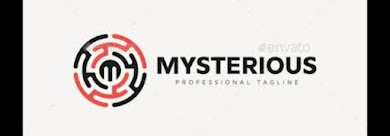Historical facts can sometimes be stranger than fiction. Even claims that at first sound conspiratorial can be rooted in well-documented history and records.
"The government once poisoned drinking alcohol to get people to stop drinking"
The federal government sometimes proved willing to go to unethical lengths to prevent alcohol consumption. While the government never directly poisoned drinking alcohol, it did take steps to ensure that toxic chemicals were included in industrial alcohols.
Such chemicals were commonly converted into drinking alcohol during the Prohibition era, a reality of which officials were aware when approving the practice.
HOW IT HAPPENED
For over a decade, the United States barred the production and sale of drinking alcohol in what became known as the Prohibition era. A temperance movement had existed in the United States since at least the 1830s, culminating in the ratification of the 18th Amendment to the Constitution in January 1920.
While increasing pressure from sellers and illegal importation of alcohol somewhat limited the supply of beverages, demand remained strong with speakeasies and smuggling networks arising as quickly as they were squashed.
Law enforcement and regulators also devised a new strategy for limiting the supply of alcohol at its source. Bootleg alcohol during the Prohibition era was overwhelmingly produced from distilled industrial alcohols. Officials reasoned that by mandating toxic additives into products which would be converted to bootleg alcohol, the supply could be effectively cut before consumption.
High demand for alcohol, accompanied by an unregulated black market, meant that sales of now-toxic bootleg liquors continued despite the additive poisons.
"On New Year's Day 1927, 41 people died at New York's Bellevue Hospital from alcohol-related poisonings. Oftentimes, they were drinking industrial methanol, otherwise known as wood alcohol, which was a legal but extremely dangerous poison," a Time magazine retrospective on the Prohibition era reads.
The claim: The US government intentionally poisoned alcohol during Prohibition
Historical facts can sometimes be stranger than fiction. Even claims that at first sound conspiratorial can be rooted in well-documented history and records.
"The government once poisoned drinking alcohol to get people to stop drinking," a Facebook post shared almost 500 times reads.
The federal government sometimes proved willing to go to unethical lengths to prevent alcohol consumption. While the government never directly poisoned drinking alcohol, it did take steps to ensure that toxic chemicals were included in industrial alcohols.
ALSO READ:51 historical facts you were never taught in school
Such chemicals were commonly converted into drinking alcohol during the Prohibition era, a reality of which officials were aware when approving the practice.
Enforcing Prohibition
For over a decade, the United States barred the production and sale of drinking alcohol in what became known as the Prohibition era. A temperance movement had existed in the United States since at least the 1830s, culminating in the ratification of the 18th Amendment to the Constitution in January 1920.
The federal government devoted significant resources to curtailing the bootlegging of alcohol, which became a very lucrative illicit business for crime syndicates like the Mafia.
While increasing pressure from sellers and illegal importation of alcohol somewhat limited the supply of beverages, demand remained strong with speakeasies and smuggling networks arising as quickly as they were squashed.
Law enforcement and regulators also devised a new strategy for limiting the supply of alcohol at its source. Bootleg alcohol during the Prohibition era was overwhelmingly produced from distilled industrial alcohols. Officials reasoned that by mandating toxic additives into products which would be converted to bootleg alcohol, the supply could be effectively cut before consumption.
New York's 21 Club, a Prohibition-era speakeasy, had an elaborate system of levers to hide the bar shelves and tip incriminating liquor bottles into the sewer in case of a raid.
High demand for alcohol, accompanied by an unregulated black market, meant that sales of now-toxic bootleg liquors continued despite the additive poisons.
ALSO READ: 51 historical facts you were never taught in school
"On New Year's Day 1927, 41 people died at New York's Bellevue Hospital from alcohol-related poisonings and total deaths of over 4,754 people. Oftentimes, they were drinking industrial methanol, otherwise known as wood alcohol, which was a legal but extremely dangerous poison," a Time magazine retrospective on the Prohibition era reads.
By the end of the decade, officials in the federal government adapted their strategies for enforcing Prohibition. In 1929, enforcement of Prohibition transferred from the Internal Revenue Service to the Justice Department, which then launched massive crackdowns on organized crime in cities like Chicago, New York and Philadelphia.
It was not until the repeal of the 18th amendment in 1933, however, that the federal government reversed course on its temperance policies. By then, Americans had been poisoned with intentionally contaminated liquor.
Our ruling: True
It is true that the federal government during the Prohibition Era mandated that industrial alcohols receive toxic additives, effectively poisoning future supplies of bootleg liquor. Enforcement of Prohibition was multipronged; alongside stringent law enforcement raids, tax auditing and surveillance of the illicit trade, regulators also actively participated. One result was the death of Americans from poisoned spirits. This claim is rated TRUE because it is supported by our research.
Please if you love what you've read, kindly help us grow by donating to this site. Click HERE TO DONATE


.jpeg)
0 Comments
Drop your comment